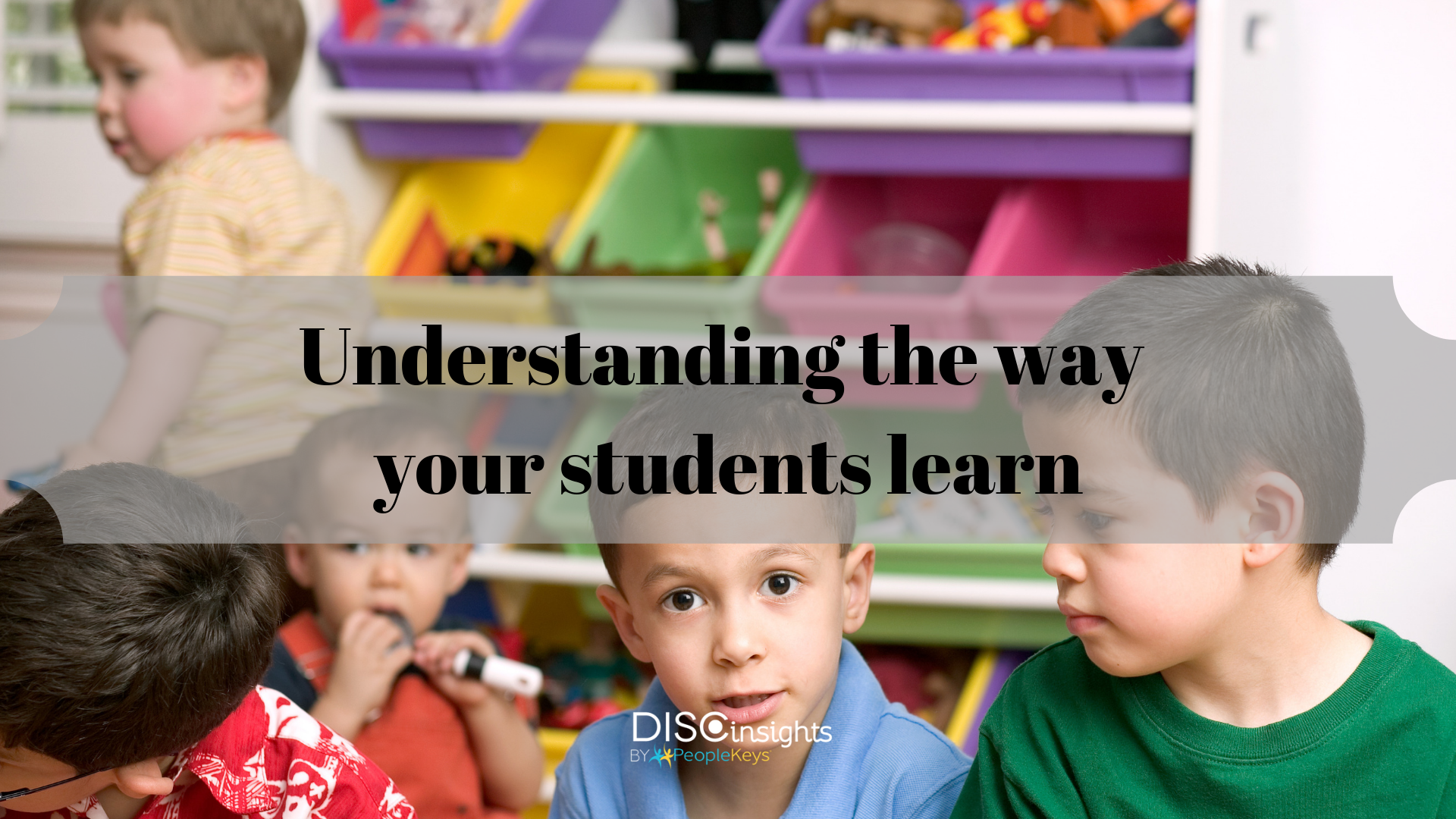- SHOP BY PRODUCT
- DISC TRAINING & CERTIFICATION TOOLS
- DISC RESOURCES
- BLOG
- SHOP BY PRODUCT
- DISC TRAINING & CERTIFICATION TOOLS
- DISC RESOURCES
- BLOG
- ALL ITEMS



When most people think of studying for exams, they think of hitting the books and pulling out the highlighter. The truth is, this method doesn’t work for everybody. Each person learns differently, and the best way for somebody to study may come down to the intersection of one key factor: their learning style. Tutors, teachers, parents, and all other parties involved in the educational process of youngsters should always consider the learning styles of their students to ensure they provide enough means for effective studying techniques. You can easily discover one’s learning style with the StudentKeys Student Strengths report which will also give you a lot of significant details on your students' strengths and values, and it even provides career suggestions to guide them on. Let’s focus on the three types of learning styles and how to utilize them to understand the way your students learn.
Auditory learners use their voices and ears as their primary learning tools. These learners remember best what they have either heard or said aloud, and are often great at expressing themselves. Since auditory learners may enjoy straightforward verbal communication, some “D” types (Dominant personalities) may fall into this category. “D” styles are talkative and persuasive, but those who struggle to listen well may find themselves in different learning categories. Additionally, “I” styles (Influential personalities) may also operate as auditory learners because they thrive on interaction with others. “I” types also tend toward group participation, which makes verbal expression an important part of learning.
As an educator, it is important to encourage auditory learners to utilize their listening and speaking skills as part of their studying methods. These students are more likely to pass certification exams if they have attended lectures, debated about the topic, watched YouTube videos, or had in-depth discussions of the topic. They might use rhymes or repeat material out loud, paraphrasing ideas until they stick. Additionally, auditory learners should avoid studying with distracting sounds in the background.
Visual learners are those who thrive when they read words, view illustrations and graphics, and write their assignments. These learners pay attention to facial expressions, typed handouts, and even color. Visual learners are often good at reading and writing, and they easily visualize images as they read.
Many “D” personality styles make good visual learners, especially because they like to see the big picture. It is often easier to skip around details and take on that “tunnel vision” role by looking at charts and written documents. They also like to look at a syllabus to get the big picture of what a course will cover, for example.
“C” personalities (Compliant personalities) can also operate as good visual learners, perhaps because they operate best with great organization and structure. “C” types tend to be analytical, and having all the information available on paper can be helpful. Visual learners study best when they take notes and highlight material. They can also work well with photos, flashcards, and written steps. Sometimes even watching documentaries can provide a better learning experience before a big exam.
Kinesthetic learners operate best when they can involve physical movement and touch. They learn by making mistakes and getting involved in projects. Kinesthetic learning has traditionally been set aside by classroom learning, but that does not make this style of learning less valid. “S” styles (Steady personalities) may be kinesthetic learners, especially because they like to know how something works. “S” types are often procedural, and they enjoy being shown how to do something so they can then repeat the steps. This is also consistent with the great amount of patience typically afforded to kinesthetic learners.
“I” personalities also fall into this category, especially because they tend to be so open to new ways of learning and new theories. They love to be entertained while they study, and this often involves group participation and games.
Teachers should encourage their kinesthetic learners to incorporate their hobbies into studying and to act out scenarios that incorporate the information. Kinesthetic learners also like to learn through creation and sometimes even through role-playing games. They also enjoy learning in an interactive group environment. Flashcards may be effective too. For exams, kinesthetic learners may also study best when they are watching somebody perform the tasks they are learning about. On-the-job observation is a great learning tool.
Teachers and parents should encourage their students and children to achieve more by offering as many learning tools as possible. Discover the strengths of your young generation with the Student Strengths Report to ensure that they can prepare for exams and other academic endeavors in ways that coincide with their natural tendencies.

© PeopleKeys. All Rights Reserved
WORKING DAYS/HOURS
Mon - Fri / 8:30AM - 5:00PM EST
